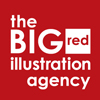How to Write With a Calligraphy Marker

Calligraphy is an art form that looks wonderful and can make lettering more personal. If you’ve ever seen calligraphy writing videos, you may be interested in trying it out for yourself.
Well, the post below takes you through the various steps involved with how to write with calligraphy markers. By the end, you’ll be feeling more assured about giving it a shot for yourself.
Writing With Calligraphy Pens
The first step is to find your calligraphy pen. One of the main elements involved in this step is how the chisel tip is shaped. The right calligraphy pen will have a chiselled tip and be made specifically for italic calligraphy.
There are other options that have different-shaped tips and they can be used for practice. However, for the best results, go for pens with a chisel tip for the best hand lettering results.
Once you have your marker, it’s time to start experimenting with the angles.
The angles you use when writing calligraphy have a big impact on the end result. Learning how to hold the pen at various angles to achieve different results is key for calligraphy writing.
So, start by trying out different angles when writing and noticing how they produce different effects on the page. This is where people are able to inject a more personable factor into their calligraphy work.
When you’re using a marker with a chiselled tip, you’ll notice that different angles will impact how thick or thin the strokes are. If you hold a certain angle, the letters will produce a similar amount of thickness and therefore, thickness throughout different parts of the letters.
Once you notice this, you can begin making subtle adjustments to the angle of your brush pens whilst writing to create thinner or broader strokes.
When people are first learning to write faux calligraphy, they get a little stuck with spacing. To help with improving your spacing, you can measure your paper with a pencil and ruler.
Measure up a writing area and lightly create borders with a pencil and ruler. This can help you to understand how much spacing comes into play with calligraphy writing.
The more you practice this, the more naturally it will come, and you’ll eventually be able to write without needing the measurements. This is great for developing your spacial awareness whilst brush lettering, enhancing your calligraphy skills.
Also read: How to Hold Calligraphy Pen
Conclusion
So, that wraps up our post about the basics of learning to write with a calligraphy brush pen. Be sure to implement the tips mentioned throughout our post, and remember that your skills will improve over time and with practice.
You can use practice sheets to improve your calligraphy style and nail the basic principles. Be sure to implement both thin strokes and thick strokes to create your own style. The more you practice, the more you’ll come to terms with how the calligraphy ink reacts on the page.
We hope that you’re feeling more confident about giving it a go for yourself. Learning to write calligraphy can be a learning curve but a rewarding experience. You can use it to enjoy some quiet downtime whilst also creating beautiful calligraphy that can be sent to loved ones.
FAQs
Can you use fountain pens for faux calligraphy?
You can use a fountain pen for calligraphy. This is because the fountain pen nib holder can produce both thin upstrokes and thick strokes, which is essential for modern calligraphy. Furthermore, the ink flow from a fountain pen is better than a regular pen when creating beautiful lettering.
Can Crayola markers be used for actual calligraphy?
You can use a Crayola felt tip pen as a writing tool for calligraphy. However, the shape of the nib makes it more difficult to apply more pressure or less pressure for different scripts. Therefore, you may struggle with upward strokes and other basic strokes when making letters.
Can a dip pen be used for calligraphy?
Dip pens can be tricky to get the hang of initially. However, once you’ve mastered it, you can use them for calligraphy lettering.
Affiliate Disclosure
In compliance with the FTC guidelines, please assume the following about all links, posts, photos and other material on this website: Any/all of the links on this website are affiliate links of which The Big Red Illustration Agency receives a small commission from sales of certain items, but the price is the same for you. www.bigredillustrationagency.com is a participant in the Amazon Services LLC Associates Program, an affiliate advertising program designed to provide a means for sites to earn advertising fees by advertising and linking to Amazon.com & Amazon.co.uk. Pages on this site may include links to Amazon and its affiliate sites on which the owner of this website will make a referral commission.
FULL TERMS HERE Cookie preferences: cookie preferences

Written By Adam Rushton
Adam has made a name for himself in the illustration industry and is a passionate blogger and writer on the subject of art, illustration and graphic design.
His artwork has been featured in countless publications and used for very well-known media projects. As a professional illustrator for over 20 years, Adams media outlets, a wealth of knowledge, and experience enable him to consult and advise artists and illustrators in this country (from York and Manchester to Southampton and London) and all over the world.



































